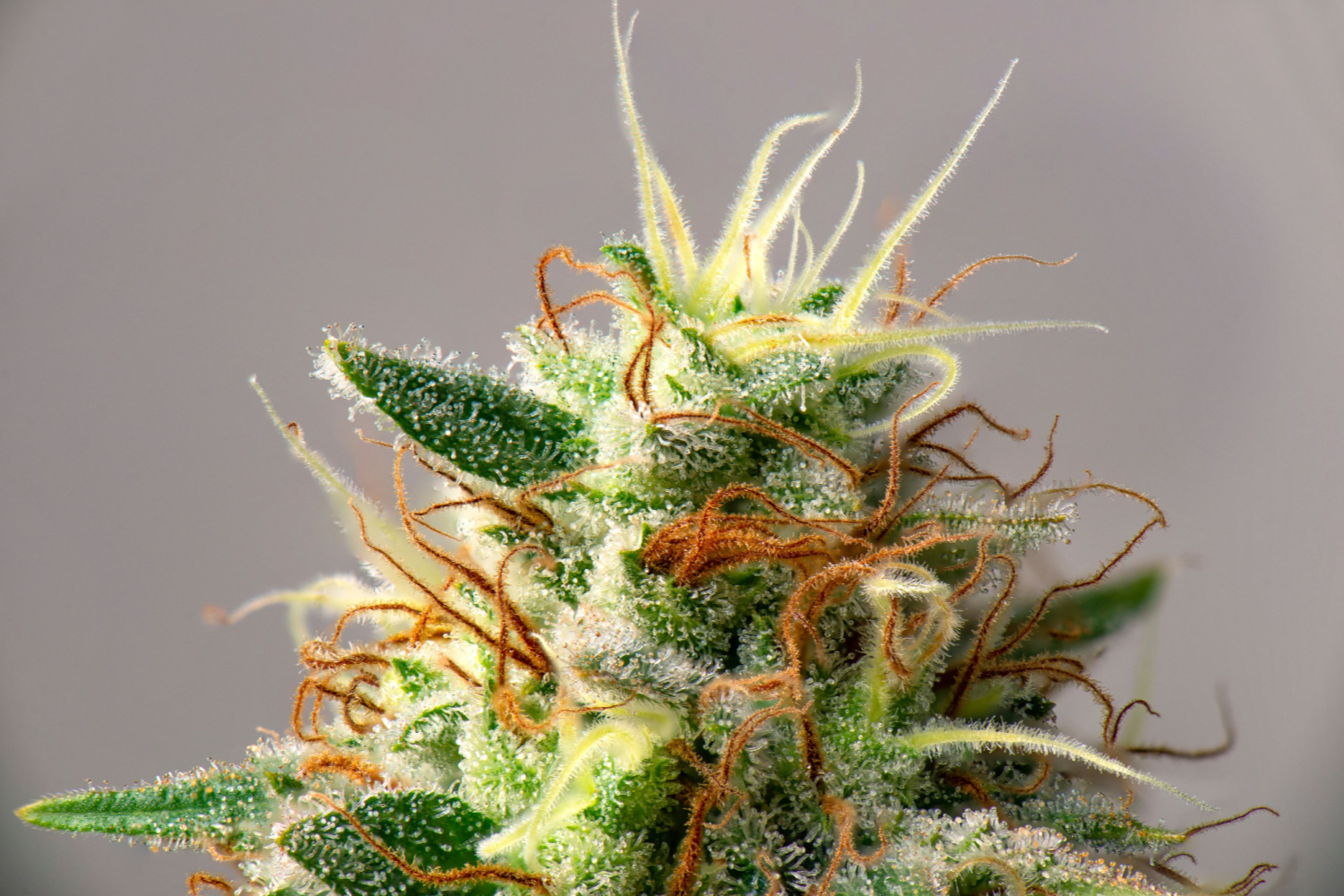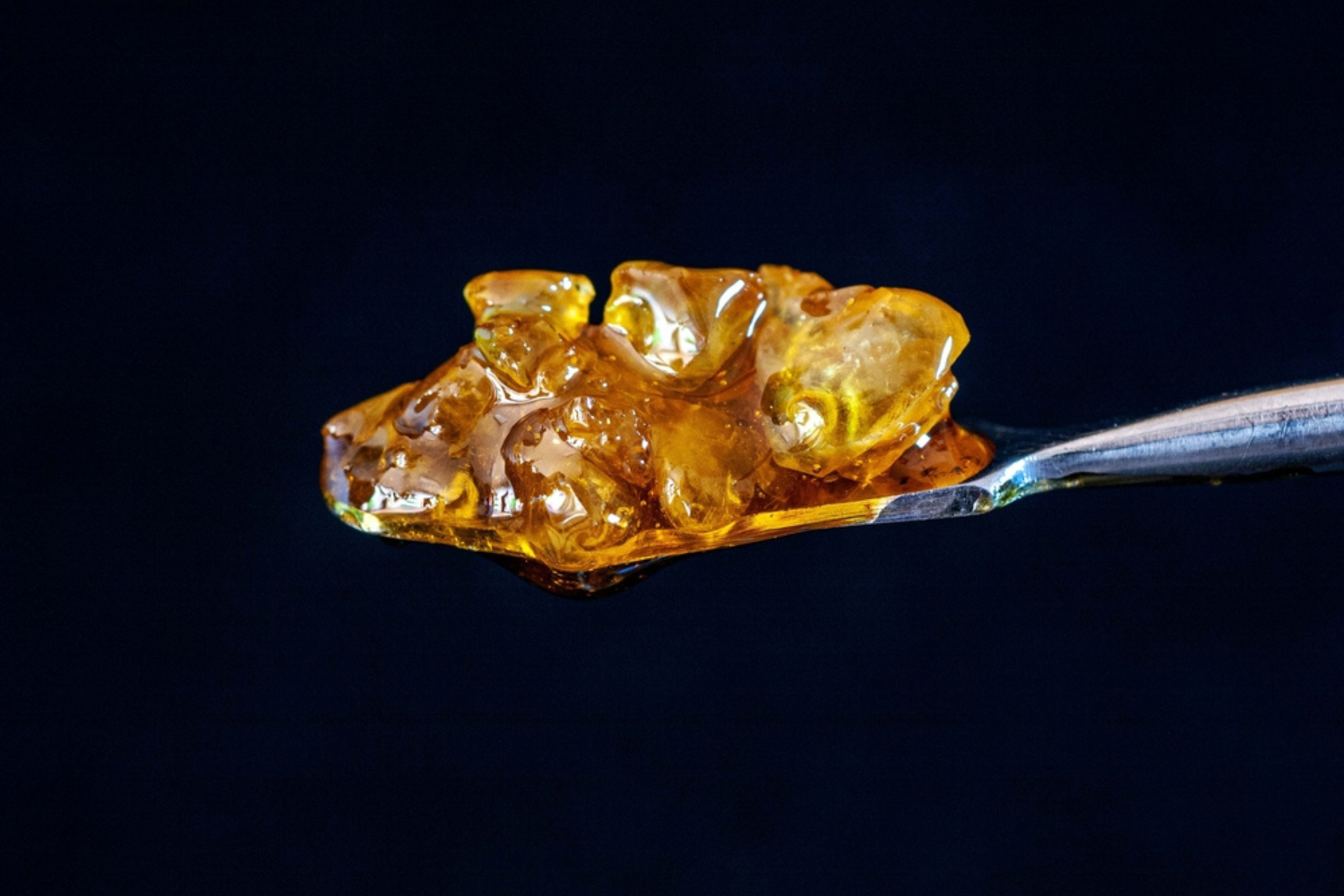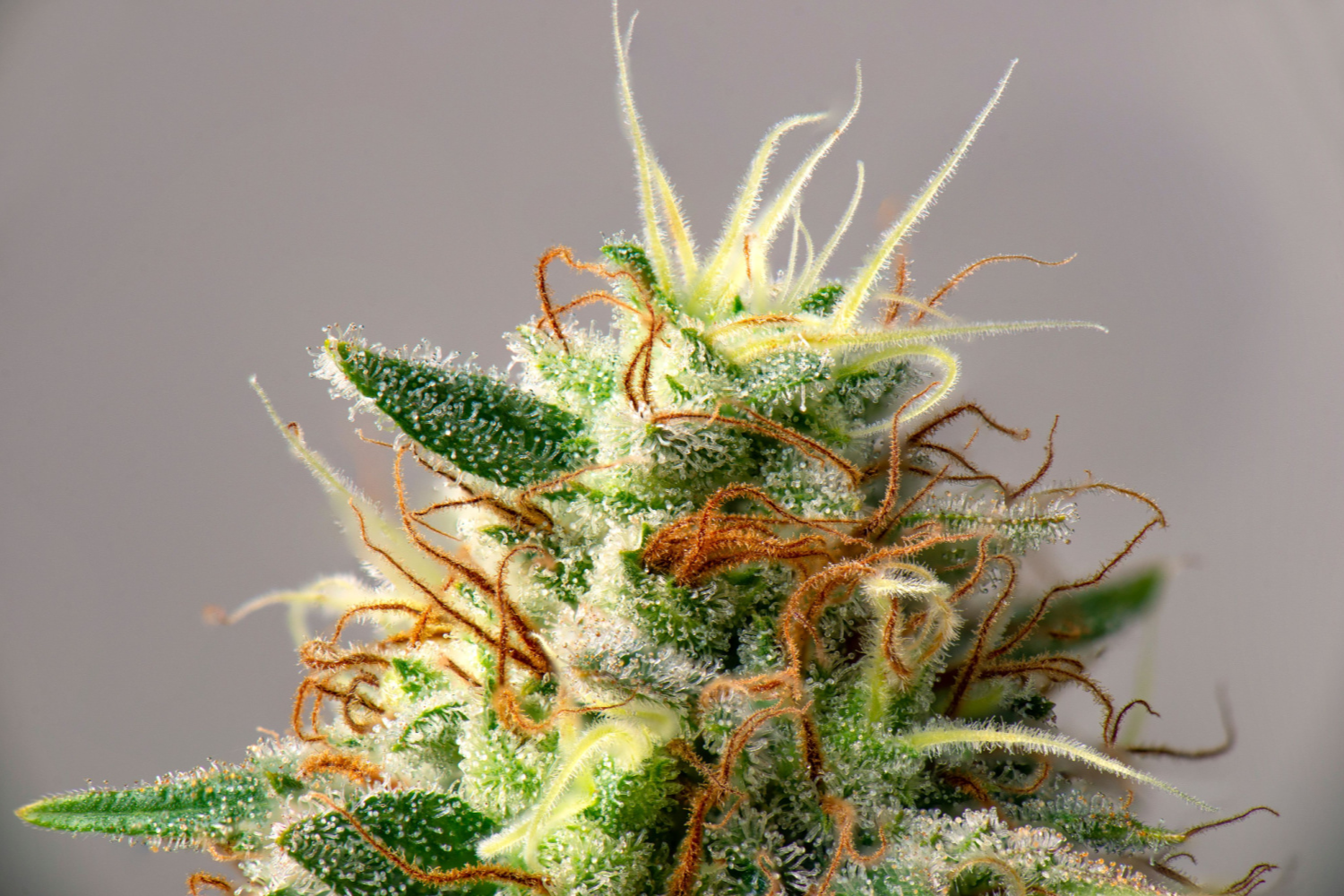Cannabinoids like THC and CBD have been used as natural remedies for thousands of years, despite being largely misunderstood. But these aren’t the only compounds found in cannabis plants (or the plant kingdom, for that matter). Terpenes - also referred to as "terps" for short - may have therapeutic benefits that either build upon or expand the effects of CBD and other compounds in the cannabis plant.
So what roles (if any) do terpenes and other cannabis compounds play in our favorite CBD oils and other hemp-derived products? Are terpenes effective, or is it just hype? Is there legitimate medical use for the many terpenes in clinical cannabis?
There’s a lot to unpack here, but all of these questions (and more) need answering if you want to fully understand the potential therapeutic properties of your cannabis extract.
What are Terpenes, and What Do They Do?

Terpenes play a critical role in cannabis and nature as a whole. They're oily aromatic compounds that determine the flavor and scent of vegetation - cannabis or otherwise. Without terpenes, every fruit, vegetable, or aromatic plant wouldn't have its distinct, pleasant (or unpleasant) aroma.
Flavor and Scent
To be clear, terpenes in cannabis are identical to those found in their other plant counterparts - just like how CBD is the same compound, no matter which cannabis variety it's from.
For instance, limonene gives citrus fruits their tart, sour flavor and scent. A cannabis strain high in limonene will also have a noticeably citrusy taste.
But that’s not the only reason - or the main reason - why cannabis terpenes are important for new and experienced hemp-derived CBD fans.
Potential Health Benefits
While terpenes may help savvy CBD consumers tailor their flavor experiences, many terpenes offer important medicinal benefits. As a result, they're essential components in quality CBD oils and other products.
Although we need more research, some evidence suggests different terpenes have a list of advantages and uses, such as:
-
Pain relief
-
Anti-nausea
-
Anti-inflammatory
-
Antidepressant
-
Anti-anxiety
-
Antibacterial
-
Antifungal
-
Mood improvement
-
Sleep regulation
-
Neuroprotective effects
-
Antioxidant properties
Both CBD and THC are effective against those same symptoms (some better than others), demonstrating the importance of those organic compounds. Consumers will notice different results depending on the CBD product's dominant terpenes. If you understand the benefits of specific terps, you can accurately align each product with your wellness needs.
Recreational Effects
Terpenes are also relevant to recreational users. Although more associated with "marijuana," hemp-derived cannabis compounds have expanded to include delta-8 and some delta-9 THC. The line between medicinal and recreational cannabis is slightly blurred.
Regardless, the potential health benefits of cannabis terpenes also impact recreational consumption. For instance, humulene - typically found in hops, sage, or ginseng - triggers a relaxing "high" and suppresses appetite. High-humulene strains, therefore, are best for relaxation, with an increased appeal to consumers who don't want the voracious "munchies."
Inversely, strains rich in terpinolene - found in nutmeg, tea tree oil, and apple skin - will have highly stimulating effects when combined with THC.
Without these chemical compounds, there would be little to no difference in the smell, taste, and effects of different cannabis cultivars.
How Many Terpenes Are Found In Weed?
To date, botanists identified around 400 terpenes found in cannabis. This number is a drop in the bucket compared to the roughly 30,000 known aromatic compounds across every living plant species.
What are Cannabis Terpenes, and What Are Botanical Terpenes?
As we mentioned, all plants create terpenes. Those aromatic compounds occur naturally and don't change based on their source plant. Limonene from a lemon is the same as limonene in cannabis.
Ultimately, cannabis terpenes are terpenes found in cannabis products, while their botanical counterparts come from other plant sources.
Why Source Matters
Although we explained that all terpenes are universal, it's not so simple regarding cannabis sativa plant products. There are two ways manufacturers create full and broad-spectrum products.
The most common option is terpene infusion. The problem with conventional CBD extraction methods - even CO2 purification - is that the process destroys most of the cannabis terpenes. Vendors have no choice but to artificially infuse their final products with bioactive compounds from other plants.
Unfortunately, this can hamper the extract's medicinal properties by draining the cannabis cultivar of crucial organic compounds. Some companies solved this by modifying their techniques to preserve cannabis terpenes naturally.
On the flip side, there's one advantage to artificial terpene infusion. A demand for strain-specific products prompted some CBD companies to custom-build (albeit artificially) the terpene profiles to simulate different strains.
But if you're not picky about cultivars and equally value terpenes for medicinal purposes, you'll be happier with the naturally occurring aromatic compounds found in cannabis.
Why Terpenes Are Important
Terpenes are important for various reasons. Although we enjoy harnessing them for their potential health benefits, these oily aromatic compounds are critical for many reasons.
Reproduction
Terpenes play an important role in plant reproduction. Certain compounds give off a scent that attracts pollinators. Without them, it would be impossible for some plants to reproduce.
Survival
Being rooted in one place make plants easy prey for any foraging animal or insect out for food. Some plants (including cannabis sativa) use certain terpenes to repel or harm potential predators.
For instance, some terpenes give off an unappealing scent meant to keep animals away. Others go further, causing unpleasant reactions that will (hopefully) teach animals and bugs to stay away.
Some terpenes have antifungal or antibacterial properties, which help fight off disease. In other cases, terps help plants heal from physical damage.
Essential Oils
Terpenes are the primary ingredients in essential oils, used in everything from cleaning supplies to aromatherapy. These products are massive money-makers due to their versatility in commercial and natural therapeutic uses.
As we mentioned earlier, these compounds can also be used as flavoring agents - a common practice in the cannabis extract market.
Medical and Recreational Cannabis
This topic is up next, so we'll spare the details here. The bottom line is that cannabinoids and terpenes affect the body more efficiently by working together.
Whether recreational or medical, cannabis terpenes impact the flavor, smoking experience, and effects.
What is the Entourage Effect?
The Entourage Effect is a synergistic relationship between cannabinoids and terpenes. The term was first coined by top cannabis researcher Dr. Raphael Mechoulam. However, his findings related to our internal cannabinoids and their interactions with other compounds and constituents in our bodies.
Dr. Ethan Russo took Mechoulam's concept and applied it to external cannabinoids and plant terpenes.
Like Mechoulam, Russo was right.
All cannabinoids and terpenes affect us in some way, whether recreational or medicinal. Most - if not all - of these compounds have overlapping effects, with some unique ones sprinkled in between. Thanks to the Entourage Effect, these compounds can work together to increase the CBD product's overall results, maximizing potential health benefits.
Do Terpenes Enhance the Effects of Cannabinoids?
Yes and no. On the surface, terpenes work to enhance the effects of cannabinoids. Technically, however, the overlapping effects of different compounds help essentially "prop up" the same results in other cannabinoids and terpenes.
For instance, CBD might be relaxing on its own. However, a sedating terpene like myrcene adds the same effect. Ultimately, the effects of cannabis plant cultivars are heavily influenced by terpenes.
The 2 Types of Terpenes
Terpenes are split into two categories based on their molecular properties.
Monoterpenes
The simplest type of terpene, monoterpenes, are 10 carbon atoms with two isoprene units (five carbon atoms and double bonds). Some examples include:
-
Myrcene
-
Linalool
Sesquiterpenes
Sesquiterpenes are more complex, consisting of 15 carbon atoms and three isoprene units. Some sesquiterpenes are:
-
Caryophyllene
-
Humulene
What are the Potential Benefits of Terpenes?
With around 30,000 terpenes - 400 in cannabis alone - we can't cover every one. However, we picked out some of the most interesting terpenes, so keep an eye out for these in your next CBD product.
Beta-Caryophyllene
Beta-caryophyllene is interesting for two reasons. Found in sources like black pepper and cloves, caryophyllene is the first "dietary cannabinoid." According to one publication, b-caryophyllene is the only terpene known to interact with the body's CB2 endocannabinoid receptors (Hartsel et al., 2016).
Beta-caryophyllene is a calming terpene that provides relaxing effects without excessive sedation.
One 2020 study by Scandiffio et al. examined the potential applications of β-caryophyllene. According to the publication, some β-caryophyllene benefits may include:
-
Antidepressant
-
Antimicrobial
-
Anti-inflammatory
-
Anti-cancer
Humulene
Humulene certainly deserves mention because its properties fly in the face of our cannabis expectations. THC often induces the "munchies", but CBD can also increase appetite - albeit not to the same extreme.
However, humulene is a potent appetite suppressant. Cannabis strains with notable amounts of humulene may reduce or even prevent appetite changes.
Native to plants such as hops, humulene is also referred to as "a-caryophyllene" because it nearly matches the molecular structure of b-caryophyllene.
Like b-caryophyllene, humulene also provides the same mellow and relaxing effects. According to studies, humulene may offer other benefits, such as:
-
Allergy relief (Rogerio et al., 2009)
-
Anti-inflammatory (Fernandes et al., 2007)
-
Anti-tumor (Legault et al., 2003)
Myrcene
Myrcene is the most common terpene found in cannabis.
Commonly found in mangoes, the terpene is an excellent sleep aid. Cannabis strains high in myrcene will inevitably trigger strong sedation or "couchlock." Users looking to wind down in the evening should focus on products with myrcene (not to mention humulene and caryophyllene).
Myrcene is more common in indica variants than sativa cannabis plant cultivars. Consequently, people incorrectly believe all indicas are sedating. A high-myrcene sativa (comparatively less common) will be just as relaxing as an indica with the same profile.
One study researched myrcene's potential therapeutic applications (Surendran et al., 2021). According to their findings, myrcene could also be handy in the following roles:
-
Anti-inflammatory
-
Gastrointestinal health
-
Antioxidant
-
Antibacterial
-
Anti-tumor
Pinene
Appropriately named "pinene" for its rich presence in pine trees, this terpene gives off an earthy, sharp scent. Next time you're in the forest, remember you can thank pinene for making the experience even more pleasant.
More importantly, pinene offers the perfect balance between relaxation and energy. It's effective enough to maintain alertness without triggering paranoia or anxiety.
A unique effect of pinene is that it can help prevent memory loss while high on THC. Some THC consumers may feel more clear-headed with cannabis strains high in pinene.
According to one study (Green et al., 2021), pinene may also provide benefits in other areas, like:
-
Anti-inflammatory properties
-
Bronchodilator
-
Neuroprotectant
-
Antioxidant
What Terpenes Are Found in Cannabis Strains?
Although no cultivar (“strain”) will carry all 400 cannabis terpenes, they each have unique terpene profiles with different compounds and concentrations.
If you look at different cannabis strains, it's easy to see how diverse they can be, with radically different terpene profiles and concentrations. Here are a few examples:
Sensi Star (Indica)
-
Myrcene (dominant)
-
Limonene
-
Caryophyllene
White Widow (Hybrid)
-
Myrcene (dominant)
-
Caryophyllene
-
Pinene
Super Lemon Haze (Sativa)
-
Caryophyllene (dominant)
-
Terpinolene
-
Humulene
Blue Dream (Sativa)
-
Myrcene (dominant)
-
Pinene
-
Limonene
What are Cannabis-Derived Terpenes?
Cannabis-derived terpenes are terpenes extracted from the flower resin glands of female cannabis plants. Cannabis products can be re-infused with those terpenes. Because they're naturally sourced from cannabis, these terpenes provide more quality and authenticity than their generic botanical counterparts.
What Are Hemp Terpenes?
Hemp terpenes and cannabis terpenes are the same things. Contrary to popular belief, "hemp" isn't an actual plant, nor is "marijuana." These are legal terms to differentiate between federally legal hemp (0.3% THC or less) and federally illegal "marijuana" (over 0.3% THC).
Both are cannabis cultivars from the same plant species.
What Gets you High: THC or Terpenes?
THC is the only compound capable of causing an intoxicating "high." However, that doesn't mean terpenes won't offer a pleasant experience. They may help ease your symptoms without clouding your mind.
What Do Terpenes Look Like?

On their own, terpenes are oil compounds. Unfortunately, we don't have a powerful microscope to see them at the molecular level. But as we mentioned above, terpenes will have 10 carbon atoms and two isoprene units (monoterpenes) or 15 carbon atoms and three isoprene units (sesquiterpenes).
What Temperature Do Terpenes Evaporate?
Some terpenes evaporate at fairly low temperatures, so let's stick with the ones we covered:
-
Myrcene: 330F (168C)
-
Caryophyllene: 246F (119C)
-
Humulene: 223F (106C)
-
Pinene: 312F (156C)
How to Extract Terpenes
There are a few different ways to extract terpenes from the resin glands of cannabis cultivars. Ultimately, the point is to isolate the terpenes while filtering out fats, chlorophyll, and plant matter.
While some manufacturers use ethanol or butane as solvents, both of these options can leave behind toxic traces.
Fortunately, most vendors embrace solventless CO2 extraction, with some providing proprietary adjustments to improve the process.
Where to Buy Terpenes From
You can buy terpenes in full-spectrum or broad-spectrum extracts. The key is to find a reputable, dedicated vendor with a proven quality track record.
Bonata is your best source for terpene-rich products. Thanks to their proprietary low-temperature CO2 extraction process, the company can prevent terpene destruction that happens with conventional CO2 methods.
Bonata's secret purification technique provides an authentic whole-plant experience with no artificially-infused botanical terpenes.
Conclusion: What Are Terpenes and What Do They Do?
Terpenes play a massive role in plant and human health. While the part of terpenes in natural medicine isn't fully understood, we strongly believe they can help mitigate various symptoms.
Still, the groundbreaking discovery of the Entourage Effect shone a public spotlight on cannabis terpenes. With this new - although still limited - understanding, we can hopefully further research and unlock the potential of terpenes and cannabis.




